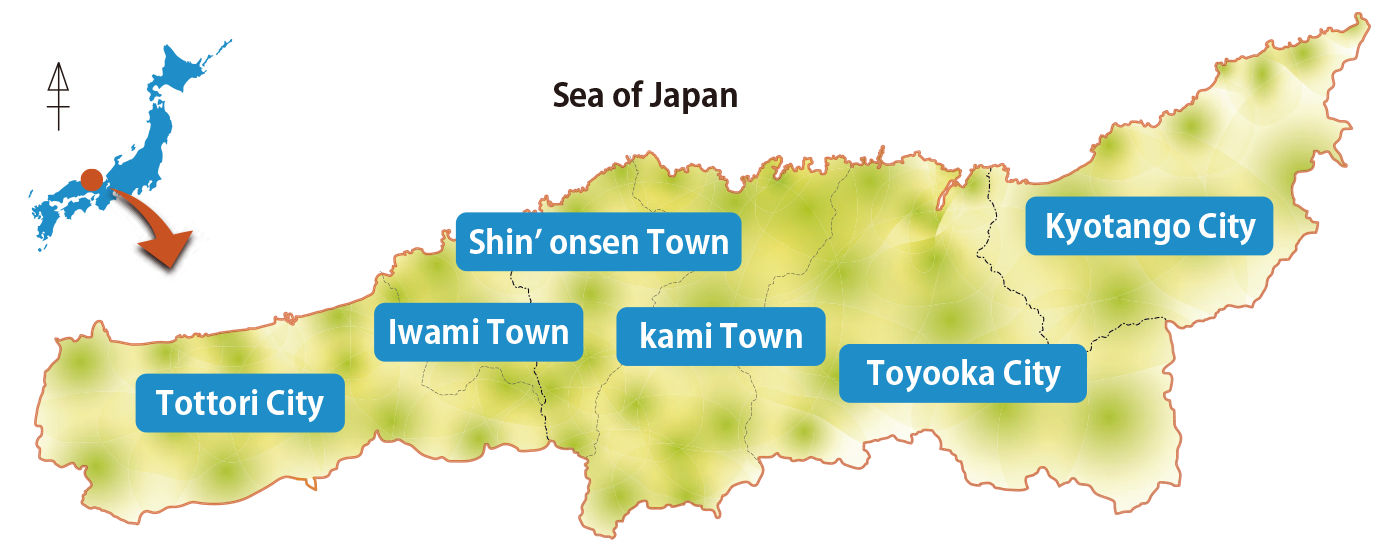About San’in Kaigan Geopark
01
Geoparks are single, unified geographical areas where sites and landscapes of international geological significance are managed with a holistic concept of protection, education and sustainable development. A UNESCO Global Geopark uses its geological heritage, in connection with all other aspects of the area’s natural and cultural heritage, to enhance awareness and understanding of key issues facing society, such as using our Earth’s resources sustainably, mitigating the effects of climate change and reducing the impact of natural disasters. By raising awareness of the importance of the area’s geological heritage in history and society today, UNESCO Global Geoparks give local people a sense of pride in their region and strengthen their identification with the area. The creation of innovative local enterprises, new jobs and high quality training courses is stimulated as new sources of revenue are generated through geotourism, while the geological resources of the area are protected.
The Earth is an important partner for people
The purpose of a geopark is to explore, develop and celebrate the links between that geological heritage and all other aspects of the area’s natural, cultural and intangible heritage. It is about reconnecting human society at all levels to the planet we all call home and celebrate how our planet and its 4,600 million year long history has shaped every aspect of our lives and our societies
Protect the evidence of our geological heritage
The Geopark values all geological heritage such as fossils, minerals, strata and landscapes in the world. Losing the geological heritage, which records our past and future, we will lose our future as well. UNESCO Global Geoparks actively discourage unsustainable sale or trade in geological material as a whole, including the sale of minerals and fossils.

The San’in Kaigan Geopark has had diverse geological and geomorphological features developed through the periods from the time when the Japanese Archipelago was a part of the Eurasian continent, the development of the Sea of Japan and to the present. Based on the background brought by these diverse features, there, also, are unique people’s lives, culture and history in the region.

Based on the study of the basalt sample collected at “Genbudo” in Toyooka City, Hyogo Prefecture, it was discovered that there was a time when the earth’s magnetic field was reversed for the first time in the world. In 1926, Dr. Matsuyama of Kyoto University discovered that the basalt lava erupted from volcano about 1.6 million years ago was magnetized in the opposite direction of the current earth’s magnetic field.

Protect the evidence of our geological heritage. Do not take or collect fossils, rocks or minerals. Any activity which destroys or alters the natural heritage is not permitted by law.
Protect the environment, plants and animals. Endangered and protected species live in the region.
